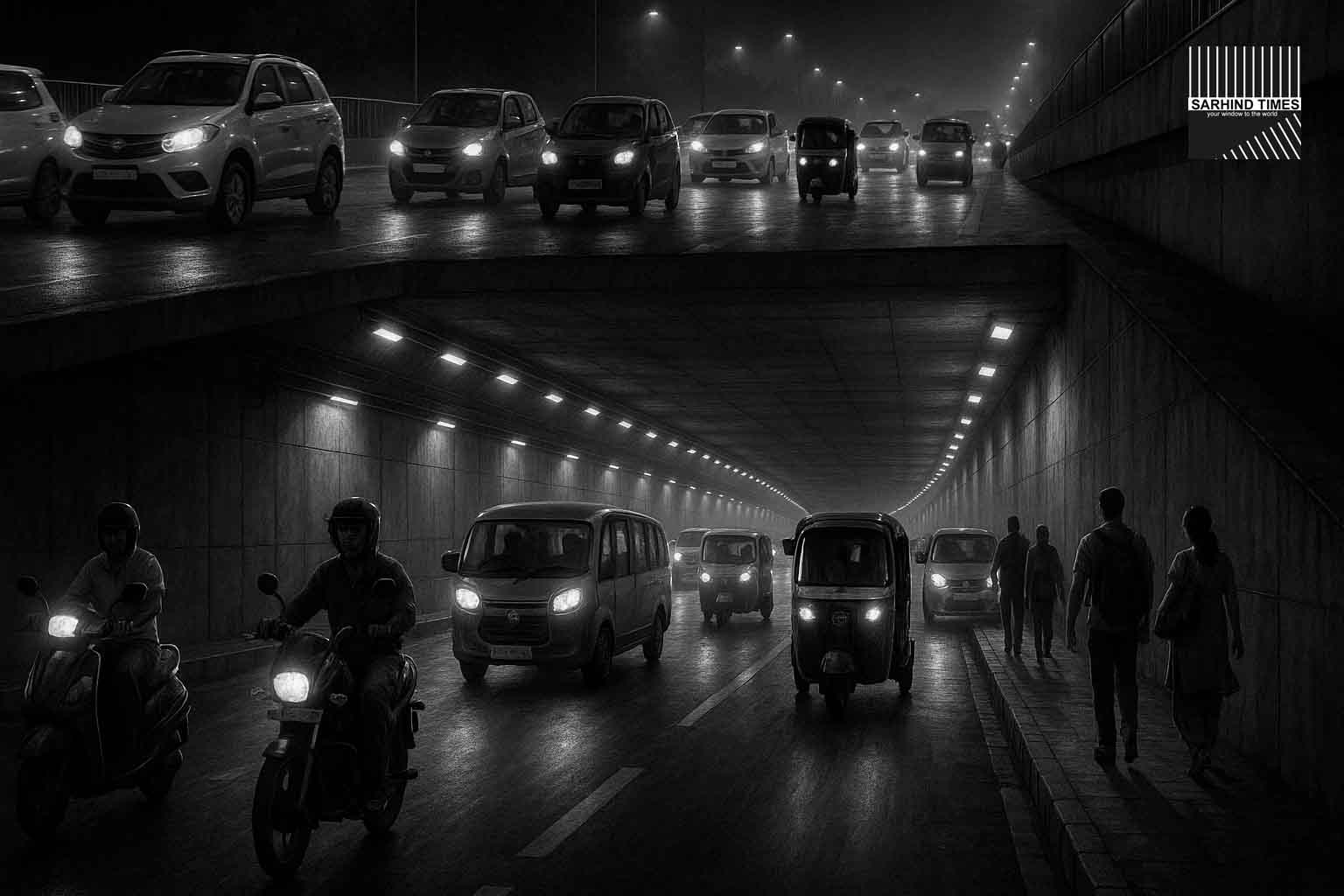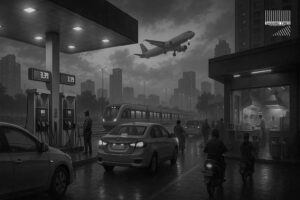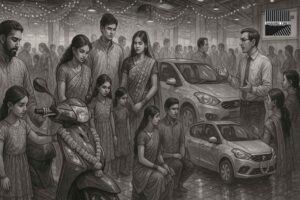Gurgaon, October 1 –
In a significant policy shift, Gurgaon authorities have opened the pedestrian underpasses at Rajiv Chowk to two- and three-wheelers in an attempt to reduce at-grade traffic conflicts and improve flow at one of NCR’s busiest intersections. The decision, framed as an experimental tweak to traffic management policy, aims to divert lighter, slower-moving vehicles underground while keeping surface-level carriageways freer for heavy vehicles and fast-moving cars.
Simultaneously, civic agencies are undertaking upgrades in lighting, drainage, and security monitoring inside the subways to ensure safer passage for both motorists and remaining pedestrians. The policy has sparked a debate—balancing the need for smoother mobility against risks of mixing motorized vehicles with pedestrian spaces.
Why Rajiv Chowk Matters
Rajiv Chowk in Gurgaon is a critical traffic node, linking NH-48, Sohna Road, and arterial service lanes feeding into Cyber City, residential colonies, and industrial belts.
- Daily vehicle count: Over 3.5 lakh crossings.
- Modes: Mix of cars, heavy trucks, autos, scooters, e-rickshaws, and pedestrians.
- Pain point: Conflicts at-grade where two-wheelers and autos jostle with trucks and buses, slowing overall throughput.
Authorities argue that shifting two- and three-wheelers underground reduces conflict points and eases surface-level congestion.
The Policy Tweak: Key Elements
- Access Granted: Pedestrian underpasses at Rajiv Chowk now allow scooters, motorcycles, and three-wheelers.
- Infrastructure Upgrades: Better drainage (to tackle monsoon waterlogging), LED lighting, and CCTV surveillance installed.
- Pilot Phase: The move is framed as a pilot, with six months of monitoring planned.
- Safety Measures: Speed restrictions and physical lane separations inside subways are being introduced.
Supporters’ View: Mobility First
Traffic planners supporting the decision say:
- Conflict Reduction: Separating slower two-wheelers from heavy NH-48 traffic cuts accident risk.
- Throughput Gain: Faster clearance at surface intersections.
- Equity: Autos and scooters get smoother, more predictable routes.
“This is a pragmatic solution. Pedestrians were already reluctant to use underpasses at Rajiv Chowk. Repurposing them to ease mobility makes sense,” said a former NHAI consultant.
Critics’ Concerns: Pedestrian Rights and Safety
However, urban mobility activists and pedestrians argue:
- Loss of Pedestrian Priority: Underpasses originally designed for walkers are no longer pedestrian-friendly.
- Safety Risks: Narrow tunnels may become hazardous when vehicles and pedestrians mix.
- Precedent Worries: Could embolden further encroachment of pedestrian space by motorized transport.
A Gurgaon-based pedestrian advocacy group warned: “Once underpasses are given to vehicles, the city admits pedestrians are the lowest priority.”
Lighting and Drainage: Ongoing Work
Historically, underpasses at Rajiv Chowk were underutilized due to poor lighting, maintenance lapses, and frequent flooding during monsoon. Current works aim to:
- Install flood-proof pumps and improved drainage.
- Deploy LED lighting and wall treatments for visibility.
- Add CCTV-linked police booths for security.
Officials hope these improvements will address both mobility and safety concerns.
Comparisons: How Other Cities Handled It
- Delhi: Similar experiments at Ring Road underpasses, but pedestrian segregation strictly enforced.
- Bengaluru: Mixed-use subways piloted near Majestic, later reversed after safety incidents.
- Singapore & Tokyo: Pedestrian underpasses remain pedestrian-only, but with higher design standards that make them inviting.
Gurgaon’s approach is seen as unique but risky, hinging on enforcement discipline.
Resident & Commuter Voices
- Auto driver, Rajiv Chowk: “This saves me 15 minutes every trip. Surface signals were a nightmare.”
- Pedestrian, IFFCO Chowk: “Now we have no safe walkway. Authorities should build exclusive footbridges.”
- Traffic Police Officer: “Initial flows look smoother, but monitoring is critical. We cannot compromise safety.”
Urban Design Debate
The policy has reopened the debate on urban design priorities in NCR:
- Should cities prioritize cars and vehicles over pedestrians?
- Can shared mobility spaces work in India’s traffic culture?
- Do policy tweaks risk entrenching poor planning instead of fixing it?
Experts caution that while pragmatic, the move underscores India’s struggle to reconcile fast motorization with safe pedestrian infrastructure.
Economic Angle
For businesses and commuters:
- Faster flows could save fuel and productivity costs at scale.
- Logistics operators gain from reduced truck idling at Rajiv Chowk.
- But health risks (accidents, emissions in closed spaces) may create hidden costs.
Next Steps
Authorities have pledged:
- Six months of data collection on traffic throughput, accidents, and user feedback.
- If successful, similar policies may be extended to Sikanderpur and Hero Honda Chowk underpasses.
- Pedestrian alternatives (footbridges, surface crossings with signals) are being explored.
Conclusion: A City at a Crossroads
The opening of Rajiv Chowk’s underpasses to two- and three-wheelers is both a mobility experiment and a symbolic moment for Gurgaon. It reflects the city’s constant negotiation between speed and safety, between vehicles and pedestrians, between short-term fixes and long-term planning.
Whether this tweak emerges as a model of pragmatic mobility or a cautionary tale of pedestrian neglect will depend on how seriously the city enforces safeguards and invests in alternatives.
For now, Gurgaon stands at a literal and figurative crossroads—choosing speed, but at the cost of walking.
#Gurgaon #RajivChowk #UrbanMobility #TrafficPolicy #PedestrianSafety #Subway #Transport #Haryana #CityPlanning






















+ There are no comments
Add yours